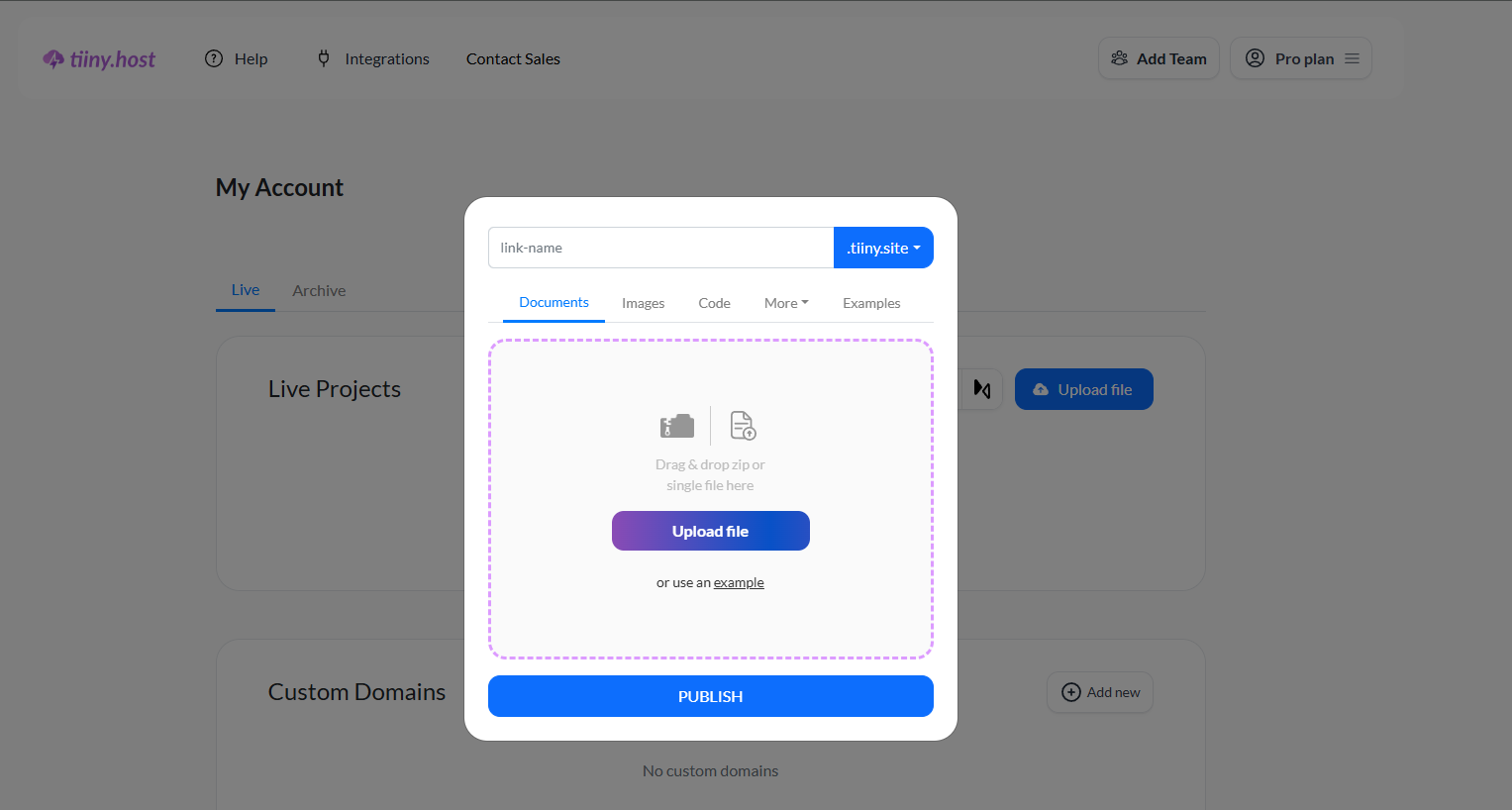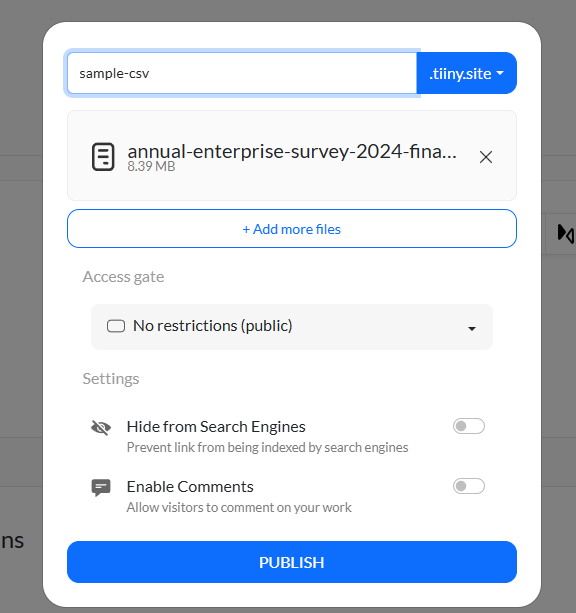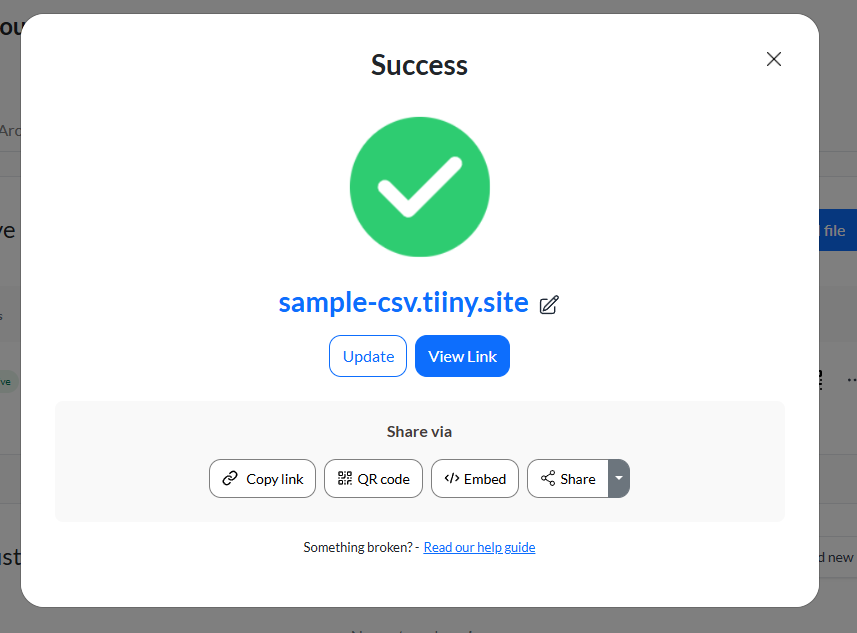- What is a CSV file?
- 3 Ways to Open a Large CSV File
- Tips for Working with Large CSV Files
- FAQs: How to Open a Large CSV File Online
You just received a CSV file from your analytics team, a client database export, or sales data for a few months. You double-click to open it, the computer slows to a crawl, the program crashes, or you get the dreaded “file too large” error.
Many data-intensive CSVs have millions of rows of information that cannot be processed on standard applications. The data in these CSVs can be important for companies to perform analyses or for individuals in their research work. You must have a way to open and share CSV files online without worrying about the size.
Let me walk you through the best methods to open large CSV files online without letting your system stop working in the middle.
What is a CSV file?
A CSV file (Comma-Separated Values) is one of the simplest ways to store and share tabular data. Each line in the file represents a row, and each value is separated by a comma or sometimes a semicolon or tab. Because of its simple storage, it is extremely portable and widely supported.
Where CSV files are commonly used:
- Exports from Websites: Many platforms like Google Analytics, Mailchimp, Shopify or any other site that lets you export data support exporting as CSV files.
- Databases: CSV is a standard format for moving data in and out of databases.
- Research and Analysis: CSV files are used to store data for researchers and analysts. They are also a great way to use in analytics tools that are automated or where you must write code.
- Business and finance: Banks, accounting tools, and payroll systems often use CSVs for transaction histories and reports.
What Makes CSV Files “Large”?
A CSV file becomes problematic when it has millions of records stored, and generally outgrows the limits of the standard system applications.
- Excel’s limit: 1,048,576 rows and 16,384 columns
- Memory constraints: Files over 100MB can slow down most desktop applications significantly
For context, a typical sales database export might contain 500,000 customer records with 50+ different types of data recorded for each. An e-commerce analytics file could easily reach 2-3 million rows of transaction data. These files often range from 50MB to several gigabytes in size.
3 Ways to Open a Large CSV File
Let’s look at some ways with which you can access large CSV Files online without need of any software. It is also possible to open large Excel files without Microsoft Excel with these methods.
Open your file online using Tiiny Host
You can use Tiiny host to open your CSV file and view it as a table without manually making any changes. You can upload and view the file within seconds, and you do not need to download any apps for that either.
Here’s how you can view a large CSV file within seconds:
- Go to Tiiny Host. Sign Up or Log in to your account to access your dashboard
- Click on “Upload File” option and select your CSV file

- Once your CSV file is ready, give a link-name to get a customized sub-domain or leave it blank

- Hit Publish and your CSV file is ready to be viewed and shared

Your CSV file is now directly converted into a spreadsheet, helping you to view the data easily. You can share the link to this file with anyone, too, and they can access the data without downloading any software. They will be able to download the file too if needed.

Suppose your file has confidential data that must be shared privately. In that case, you can password-protect your file before sharing it, and ensure you only tell trustworthy people the password when sharing.
Open Your CSV File with Google Sheets
Google Sheets can handle moderately large files, though it has constraints. If your file is large but still comparatively shorter, Google Sheets might be helpful. The performance starts degrading if the file size exceeds 100MB.
- Go to sheets.google.com
- Click “New” and select “File upload”
- Choose your CSV file
- Google Sheets will automatically import and format the data
Google Sheets is suitable for viewing and sharing, but it becomes troublesome if the row limit is hit, and then you might not be able to see the data.
Split and preview large CSVs
Sometimes the problem isn’t just viewing, but you also want to reduce the size of the files before sharing them or using them for some work. You can split the file into smaller chunks.
- Use an online splitter tool (like Split CSV) to break the file into manageable parts.
- Upload each part into your chosen viewer or spreadsheet.
This method takes a little more work but ensures that even the biggest datasets can be handled step by step.
Tips for Working with Large CSV Files
- User Descriptive File Names: When sharing files to be viewed, use clear naming conventions so receivers know what type of data they are dealing with
- Plan for Mobile Access: If there are people in the team who need to view data on the system other than a PC, make sure you use software like Tiiny Host or Google Sheets so it is easy to view from anywhere
- Protect Your Files: Even if you share the file within the organization, ensure you password-protect it, especially if it has sensitive information.
FAQs: How to Open a Large CSV File Online
Are online CSV tools safe for confidential business data?
Reputable tools use encryption and security best practices, but always review their privacy policies.
What’s the difference between a CSV file and an Excel file?
A CSV is just plain text; it stores raw values separated by commas. Excel files (.xlsx) can include formatting, charts, and formulas. CSVs are more lightweight and easier for machines to read, so they’re common for data exchange.
Can CSV files handle special characters?
Yes, the file is saved with the correct encoding (UTF-8). Some tools may misinterpret special characters if encoding isn’t handled correctly.
How do I reduce the size of a CSV file?
You can compress it (ZIP or GZIP), remove unnecessary columns/rows, or split it into multiple smaller files. Compression is especially effective because CSVs are plain text.



